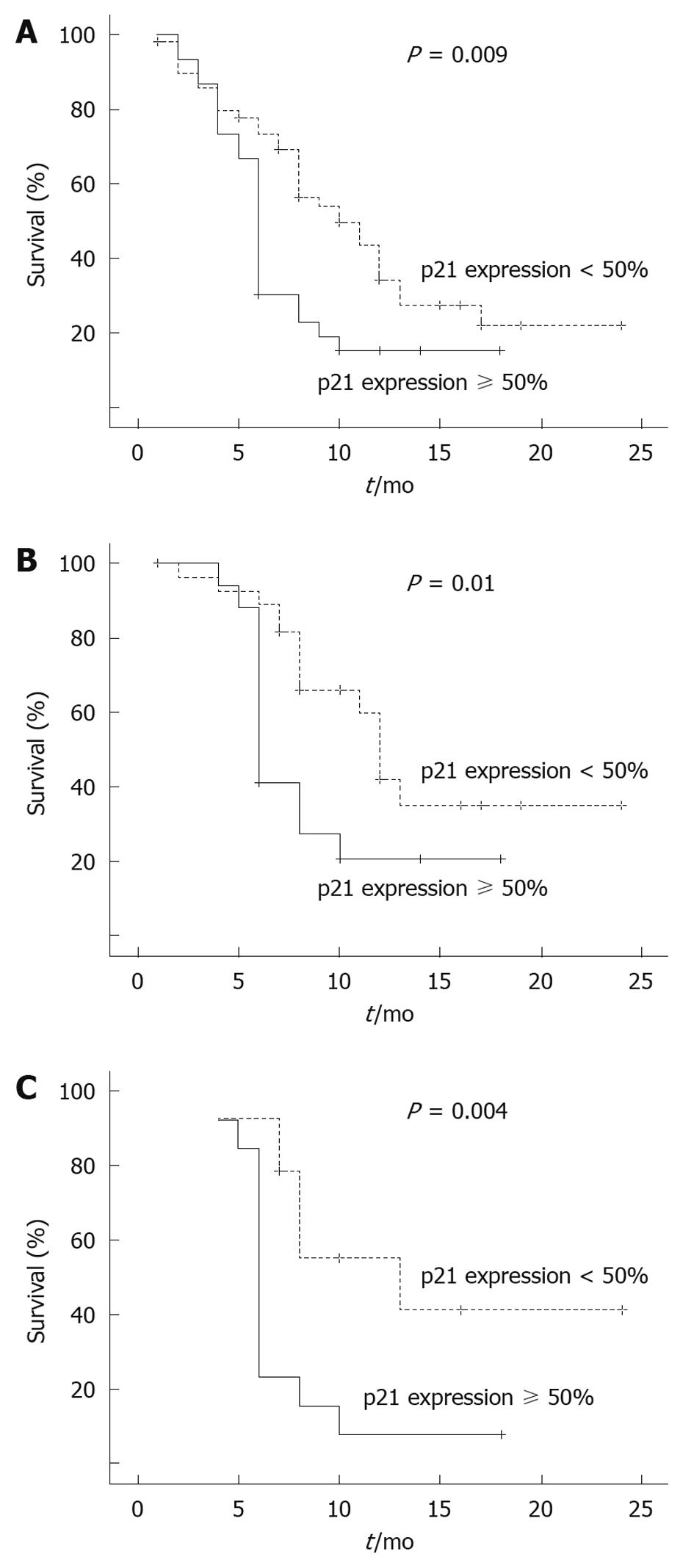Copyright
copy;2010 Baishideng Publishing Group Co.
World J Gastroenterol. Oct 21, 2010; 16(39): 4958-4967
Published online Oct 21, 2010. doi: 10.3748/wjg.v16.i39.4958
Published online Oct 21, 2010. doi: 10.3748/wjg.v16.i39.4958
Figure 1 Immunohistochemical staining for p53 in an esophageal squamous cell carcinoma exhibiting expression.
A: With primary antibody, showing reactivity (brown nuclear staining of some tumor cells) (× 100); B: With primary antibody, showing reactivity (× 400); C: With primary antibody, no reactivity (× 100). Sections were counter-stained with hematoxylin.
Figure 2 Immunohistochemical staining for p21 in an esophageal squamous cell carcinoma exhibiting expression.
A: With primary antibody, showing reactivity (brown nuclear staining of some tumor cells) (× 100); B: With primary antibody, showing reactivity (× 400); C: With primary antibody, no reactivity (× 100). Sections were counter-stained with hematoxylin.
Figure 3 Kaplan-Meier survival curves for esophageal squamous cell carcinoma patients with or without p21 over-expression.
A: Overall survival curves were classified by p21 over-expression in the whole series of ESCC patients; B: Survival curves in the operable group of ESCC patients, stratified according to p21 over-expression; C: Survival curves in the operable group of patients with positive expression of p53, stratified according to p21 over-expression.
- Citation: Taghavi N, Biramijamal F, Sotoudeh M, Moaven O, Khademi H, Abbaszadegan MR, Malekzadeh R. Association of p53/p21 expression with cigarette smoking and prognosis in esophageal squamous cell carcinoma patients. World J Gastroenterol 2010; 16(39): 4958-4967
- URL: https://www.wjgnet.com/1007-9327/full/v16/i39/4958.htm
- DOI: https://dx.doi.org/10.3748/wjg.v16.i39.4958











